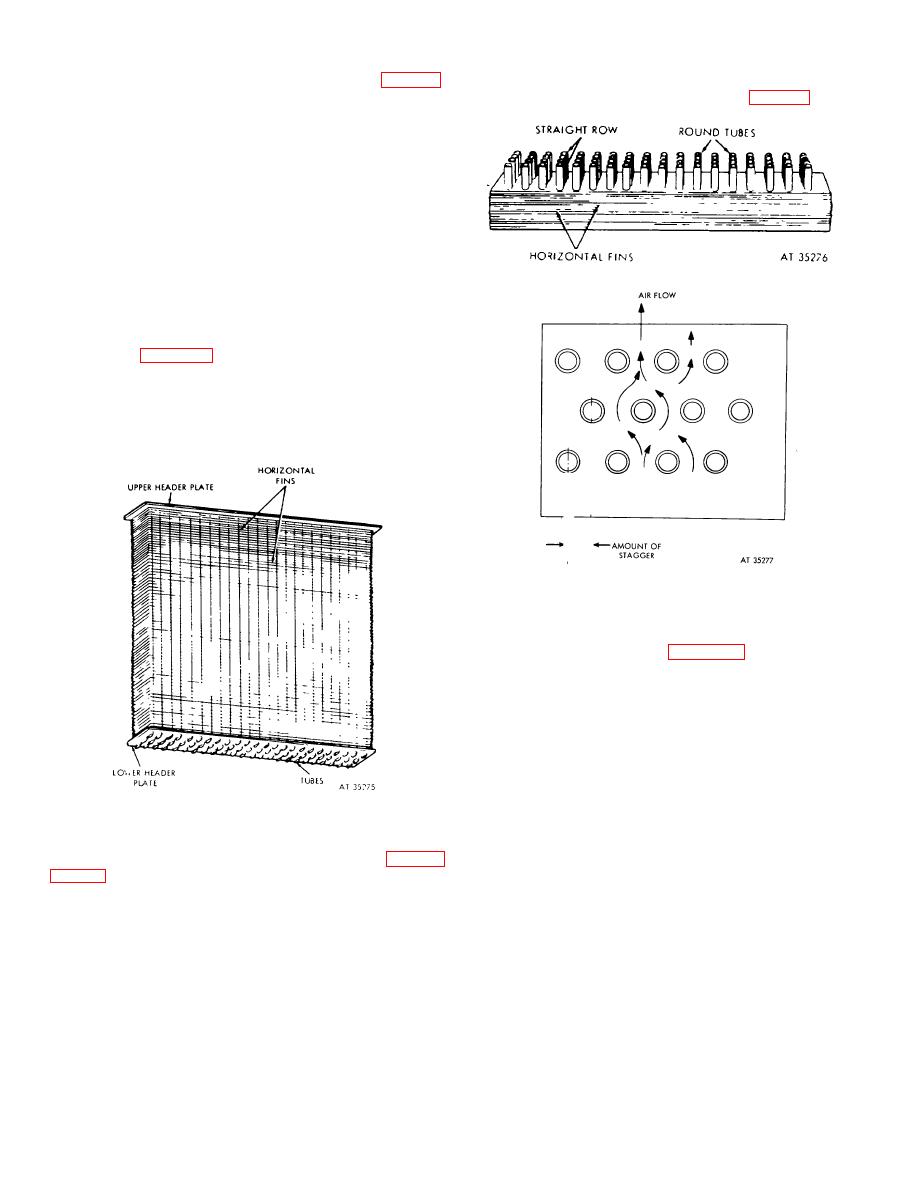 |
|||
|
|
|||
|
|
|||
| ||||||||||
|
|
 eliminates excessive splashing and distributes the water
the air entering the radiator, increasing the cooling
uniformly over the tank. The cutaway view (fig 3-3)
capacity Round tubes are easily broken by the expansion
illustrates the construction of a stamped metal tank.
of freezing water, whereas oval tubes (fig. 3-4) will be
distorted to some extent before breaking.
3-3.
Radiator Core
a. General. Radiator cores are made with a large
surface area of very thin sheet metal so that the heat of
the water passing downward through the small passages
may be readily transferred to the air. The water passages
of the core are known as the "prime" radiating portion.
Heat passes from the circulating water to the water
passages and then to the fins where it is expelled to the
Figure 3-5. Tubes in straight row.
passing air. The secondary radiation is as important for
cooling as the primary radiation, be careful not to damage
the fins.
b. Tubular Core
(1) Core, figure 3-4, Is made of a multitude of vertical
tubes, generally 1/4-inch in diameter (drawn or seam-
welded) soldered through thin sheets of metal at the top
and bottom, called header plates. The header plates form
mounting pads for the upper and lower tanks and permit
no passage of water from the tanks to the core except
through the tubes.
Figure 3-6. Tubes in staggered row.
(3) The radiating surface of these tubes is
occasionally increased by spiral fins on each tube, or
much more commonly, as in figure 3-4 by thin sheets of
metal (horizontal fins) extending all the way across the
radiator, 1/8 to 3/16 inch apart, in contact with each tube.
The front edges of horizontal fins are usually crimped or
bent back to a double thickness which strengthens the
radiator core. In most radiator cores the fins are soldered
to the tubes to speed the heat transfer.
3-4.
Radiator Supports
Figure 3-4. Tubular core.
a.
Radiators in a motor vehicle are usually sup-
(2) The tubes are generally spaced about 3/4 inch
apart, in two to four straight or staggered rows (figs 3-5
a staggered row, twice as many tube rows are exposed to
3-2
|
|
Privacy Statement - Press Release - Copyright Information. - Contact Us |